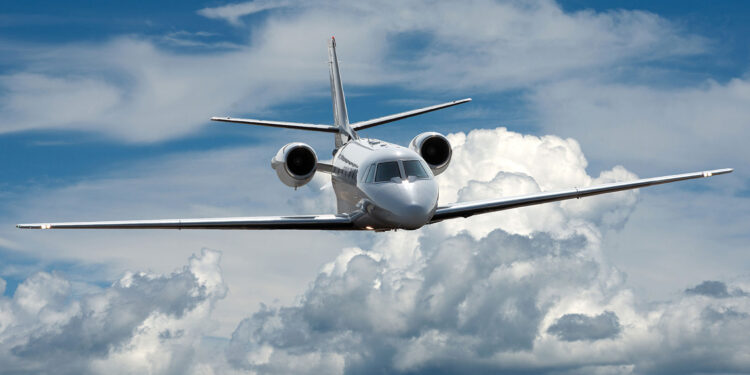Ferrying an Aircraft – Things to Consider

Additional planning and operational considerations come into play when ferrying aircraft – especially if you’re ferrying under an experimental permit. The goal of any business aviation trip is a seamless experience. Any oversight in terms of permits, arranging parking, and ferrying aircraft between airports can prove costly or cause a trip to be delayed.
The following is an overview of what you need to know:
1. Aircraft may be ferried due to drop-and-go scenarios
Aircraft are often repositioned without passengers when no aircraft parking is available at the desired destination. Passengers are often dropped at one airport, and the aircraft is ferried with crew only to another airport with parking availability. In many cases aircraft are based at a regional airport, such as Morristown (KMMU), while passengers may customarily be picked up at a larger airport like White Plains (KHPN) or Teterboro (KTEB). If there are security issues at the chosen destination airport, the crew may drop passengers and ferry to a more secure location. In some cases, depending on trip duration and aircraft parking fees, it’s more cost-effective to drop passengers at the airport and proceed home as a ferry flight. When passengers are ready to be picked up, days or even weeks later, the aircraft will be ferried back to the drop-off location.
2. Other cases where aircraft may be ferried
If one aircraft breaks down at a particular destination, another aircraft may be ferried in to continue the trip and avoid interruption to passenger schedules. There are also delivery flights by which crew members ferry an aircraft to a location where it is sold. The crew members then return commercially to their home bases. Experimental aircraft are often ferried from one location to another. The same is true of airshow demonstration aircraft.
3. Cost considerations when ferrying aircraft
In some cases paying aircraft parking fees at an airport for a period of days is more cost-effective then ferrying an aircraft back to base or a nearby airport. In other cases, however, you may have no choice but to ferry the aircraft in order to ensure a seamless trip for your passengers or avoid steep aircraft parking fees. Repositioning to a more secure airport adds to fuel burn and operating costs but could minimize damage to or tampering with an aircraft.
4. Crew accommodation and duty day considerations
Crew hotel accommodations may not be available at your destination – this can be the case at certain Caribbean or Mediterranean destinations during high season – and you may need to ferry your aircraft 100-200 NM to secure accommodation and parking options. Crew duty days must always be factored into such repositioning decisions. In some cases adding an extra 45 minutes’ ground time and flight time to reposition may exceed crew duty days. The decision to reposition needs to be made in advance to determine if a staggered or augmented flight crew is required.
5. Other considerations when ferrying aircraft
When contemplating ferrying an aircraft after dropping passengers, it’s important to consider visa requirements; NOTAMs and airport curfews; potential airport slot and aircraft parking issues; overflight permits; Customs, Immigrations and Quarantine paperwork; and credit availability at the reposition destination. Be sure also to take into account aircraft security, availability of crew hotel accommodations, and ground transport, as well as overall cost – including aviation fuel costs – of a planned reposition.
6. Requirements and/or permits may change depending on type of flight
In most cases rules are the same whether an aircraft is operating with or without passengers (as long as it’s a private non-revenue flight). It can be a different story, however, for experimental aircraft and delivery flights. Experimental flights are issued operating limitations by their governing authority such as the FAA, and certain countries will require overflight and landing permits where they would not otherwise be required for private non-revenue flights. Special Flight Permits – often referred to as “ferry permits” or “experimental permits” – may be issued to aircraft that do not currently meet applicable airworthiness requirements but are capable of safe flight. In these cases particular documentation is required to secure permits and conduct the flight. Lead time for experimental permits can be lengthy – approximately two to three weeks – due to paperwork needed from the appropriate Civil Aviation Authority (CAA).
7. Experimental permit revisions
Be mindful that short-notice permits and permit revisions can be an issue. If you’re operating in Russia for example and wish to depart an hour earlier, it’s not usually problematic for private non-revenue fights. If you’re flying on an experimental permit, however, a new permit approval may be required, and this may be difficult to secure quickly.
8. Have correct documentation onboard
You’ll need to have all the normal documentation – including airworthiness and registration certificates, insurance, and pilot licenses and medicals. If you’re operating an experimental aircraft, however, you’ll also need an Operating Limitations document from your governing authority. Some countries, when approving experimental permits, place several restrictions on validity of the permits, along with additional requirements and conditions. In such cases– such as experimental flights – you may need a Special Flight Permit. Permits are always an important consideration for experimental aircraft. Note that each country mandates its own permit lead time and documentation requirements, and it’s at discretion of the local CAA to approve or disapprove experimental flights.
Conclusion
If you’re ferrying an aircraft under an experimental permit, use an experienced 3rd-party provider, and be aware that permit processing times will be longer than for other types of flights. Communicate any schedule or trip changes as early as possible to ensure permit availability for all legs of your trip. It’s best to try to minimize last-minute schedule changes in order to ensure permit availability for all legs of your trip.
Questions?
If you have any questions about this article or if you would like assistance with planning your next ferry flight, contact me at shawnleavell@univ-wea.com.




